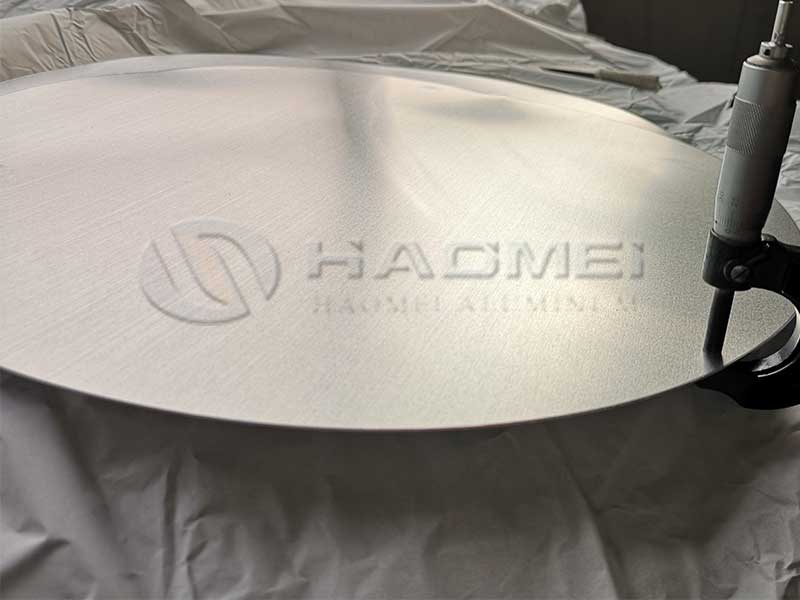Aluminum circle blanks
Aluminum circle blanks are not just mere pieces of metal; they embody a perfect fusion of functionality and adaptability that caters to various manufacturing and industrial needs. These round discs are crafted from high-quality aluminum sheets, boasting properties like lightweight tensile strength and corrosion resistance. By diving deeper, we unravel the distinctive advantages and applications of aluminum circle blanks, demonstrating why they are vital for numerous industries.
The Science Behind Aluminum Circle Blanks
Aluminum, known for its excellent strength-to-weight ratio, becomes surprisingly versatile when processed into circle blanks. The technical specifications of these aluminum discs typically include thickness ranging from 0.5mm to 10mm, with diameters potentially spanning from a few centimeters to over a meter. This capacity for customization satisfies both stringent industrial requirements and artisanal craftsmanship demands.
In our aluminum circle production, the seemingly simple "blank" is actually a critical juncture impacting downstream processes and final product quality. Slight variations in blank thickness, even within accepted tolerances, can significantly affect subsequent stamping operations. For instance, thinner blanks can lead to increased wrinkling or tearing during deep drawing, while thicker blanks might result in excessive die wear and compromised dimensional accuracy. We've found that meticulously monitoring the blanking process, including die sharpness, press tonnage, and material feed rate, is crucial to minimizing these variations. Careful attention to coil consistency from our suppliers is equally important; inconsistencies in the incoming aluminum coil's temper or surface finish directly translate to defects in the blanks.
Beyond the mechanical aspects, the surface quality of the blanks is paramount, especially for applications requiring further surface treatment like anodizing or powder coating. Scratches or burrs introduced during blanking can propagate into these finishes, leading to rejected parts. We've implemented various strategies to mitigate this, including regular die maintenance, optimized lubrication, and the use of specialized deburring techniques. Furthermore, consistent monitoring of the blank's surface finish through optical inspection systems has been vital in identifying and addressing issues before they lead to costly rework or scrap. Essentially, the seemingly unremarkable aluminum circle blank is a foundation upon which the entire manufacturing process rests.
The manufacturing process for producing these blanks usually involves shearing or rotary piercing techniques, often accompanied by subsequent treatments like annealing to enhance ductility. This method increases surface quality and facilitates the comprehensive range of applications that aluminum circle blanks can uniquely support.
Cooking & Kitchen Appliances: The Lightweight Champion
One of the most popular uses for aluminum circle blanks lies in the kitchen. Consider the making of cookware, such as frying pans or woks. The non-stick properties of aluminum, combined with even heat distribution as a result of its round shape, ensure that food cooks uniformly while promoting quick cleanup. The lightweight nature of these materials significantly eases handling for chefs and home cooks alike.
However, it's also worth noting that, unlike their heavier steel counterparts, aluminum circle blanks harness enough strength to withstand high temperatures and bending considerations. Hence, they reinforce durability without compromising functionality.
Electronics and Electrical Components: The Hidden Heroes
While most consumers rarely glimpse the materials in their electrical appliances, aluminum circle blanks play a crucial role in the electronics sector as well. Many components rely on these disks, formed into heat sinks and housings for wiring essences and LED lights. Their thermal conductivity allows heat dissipation, ensuring that devices maintain their performance levels and do not overheat during prolonged use.
Additionally, the lack of magnetic interference from aluminum makes these circle blanks desirable, especially in applications involving sensitive electronic components. Items such as mobile phone casings, computer chassis, and more benefit from lightweight, corrosion-resistant, and cost-effective aluminum solutions.
Automotive Applications: Efficiency Meets Sustainability
The automotive industry significantly benefits from the use of aluminum circle blanks, sharing the charm of using lightweight materials to enhance vehicle efficiency. These flat disks serve functions including forming critical parts of fuel tanks, brackets, and even wheels.
The progressive move towards more energy-efficient vehicles and systems can trace its development back to incorporating materials like aluminum. As the industry strives for improved fuel efficiency without a trade-down in safety, manufacturers increasingly use aluminum components, marking a pivotal turn to sustainability.
Decorative Arts: A Canvas for Creativity
Embedded within everyday artistry, aluminum circle blanks also have inspiring uses in decorative arts. Thanks to their corrosion resistance and anodization possibilities, these plain discs transform into creative canvases through processes like engraving or painting. From sculptures to custom signage, they offer a durable yet striking aesthetic, easy to manipulate and fit into creative visions across different ecosystems.


